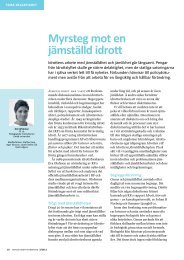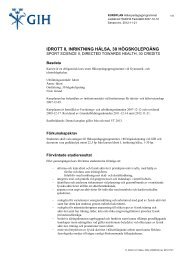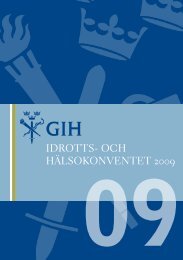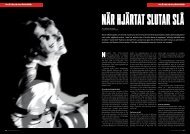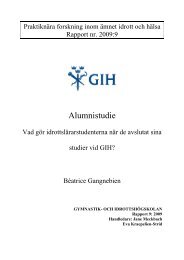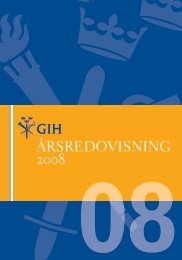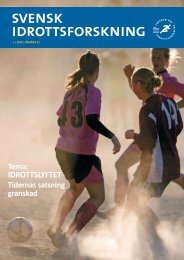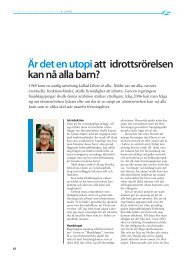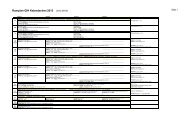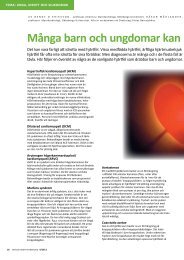Programme and abstracts - GIH
Programme and abstracts - GIH
Programme and abstracts - GIH
You also want an ePaper? Increase the reach of your titles
YUMPU automatically turns print PDFs into web optimized ePapers that Google loves.
Title:Breaking Barriers 2013 <strong>and</strong> update on the work first started in 2003Author/s:Lawrence Chapman, The Ashley School Academy Trust, UK.Abstract:Breaking Barriers has continued to be supported by the EOE since its inception in 2003. Thisproject supports the work across Europe in working in the Outdoors. In 2003 disabled groupsfrom Europe came together at Marsh Farm in Cornwall. Since then several experiences havetaken place <strong>and</strong> recently the h<strong>and</strong>book has been published. In the autumn of 2013 we plan tomeet again in the Lake District. The paper will explore the origins of Breaking Barriers, thework completed, the achievements made <strong>and</strong> the plans for the future. Lawrence is DeputyHeadteacher of the Ashley School Academy Trust www.ashleyschool.co.uk In 2012 40participants from UK <strong>and</strong> Germany were involved, in 2013 the plan is for 60 participants fromUK, Germany, Romania, CZECH REPUBLIC, Portugal, Slovenia. A write up of 2012 is <strong>and</strong>the H<strong>and</strong>book of good practice are available at http://www.eoe-network.eu/projects/Title:Incidents <strong>and</strong> accidents in Outdoor educational program in Norwegian secondary schools.Author/s:Lena Dahl, Høgskolen i Sogn og Fjordane, Sogndal, Norway.Abstract:Topic related to outdoor education, safety <strong>and</strong> risk in the Norwegian school system have hadlittle research attention so far. This paper will report results from a quantitative survey ofaccidents, near-accidents <strong>and</strong> incidents that have occurred over the past 5 years in 109Norwegian secondary schools s. A previous study indicates that the numbers of incidents <strong>and</strong>accidents in educational situations related to outdoor education are high <strong>and</strong> that they are notall being reported (Nastad, 2000). The presentation will focus on the nature <strong>and</strong> scope of theaccidents <strong>and</strong> incidents that happen in Norwegian secondary schools’ outdoor education 3rdgrade course titled “Idrettsfag”. The material will be analyzed with a theoretical comparativeframe linked to Brookes (2007) similar studies in Australia together with Bird og Germains(1992) organizational studies linking the relationship between near misses <strong>and</strong> real accidents.Title:Enriching student learning: developing a socio-cultural <strong>and</strong> historical ‘sense of place’ using anexperiential pedagogy.Author/s:Mark Leather <strong>and</strong> Fiona Nicholls, University of St. Mark <strong>and</strong> St. John, Plymouth, UK.Abstract:Whilst there has been an increasing interest in recent years in the significance of a ’sense ofplace’ in the facilitation of outdoor adventure education, in the UK it still appears largelyfocused on the relationship between the natural environment <strong>and</strong> the activity in question. Inthis paper we present empirical evidence from primary research to demonstrate how acombination of formal <strong>and</strong> informal approaches to learning in a Higher Education context canlead to a socio-cultural <strong>and</strong> historical underst<strong>and</strong>ing of ‘place’ <strong>and</strong> enrich the learningexperience when teaching classical outdoor activities. The coaching of dinghy sailing tookplace from a small fishing town in Devon, Engl<strong>and</strong> at the ‘boundary of nature <strong>and</strong>civilisation’<strong>and</strong> was part of an undergraduate outdoor education degree. An experientialpedagogy was adopted to allow for an integration of theory <strong>and</strong> practice, <strong>and</strong> provideopportunities for informal as well as formal learning. Research methods used in this casestudy included; photo-elicitation , group interviews <strong>and</strong> evidence from student assignments.Findings show that students discover a significance of the meaningful relationship betweenthe socio-cultural history of where that activity takes place <strong>and</strong> the activity itself.29




